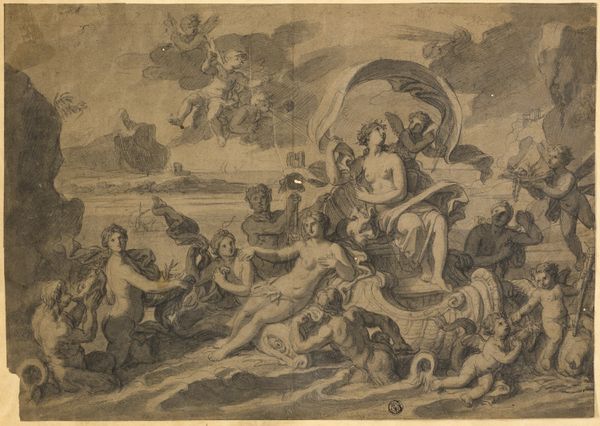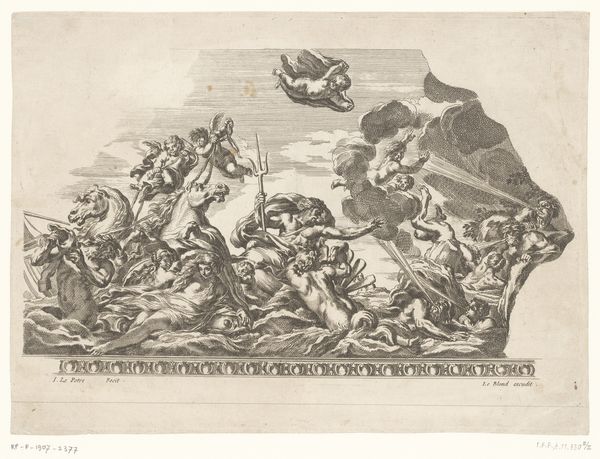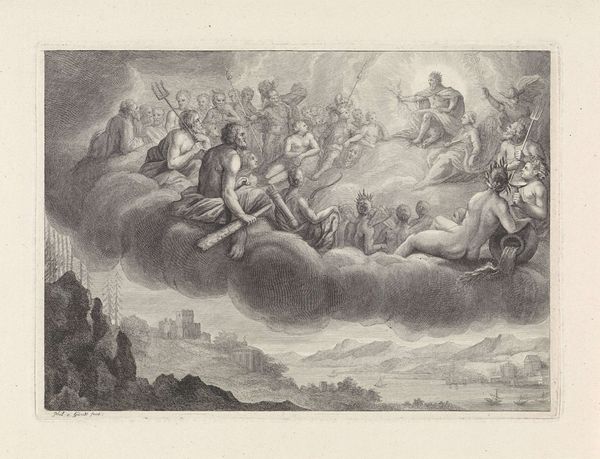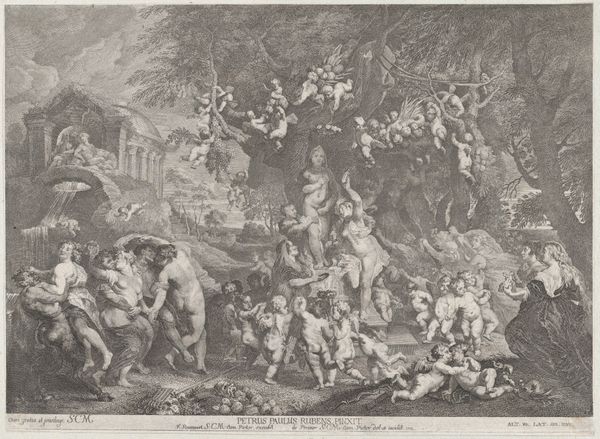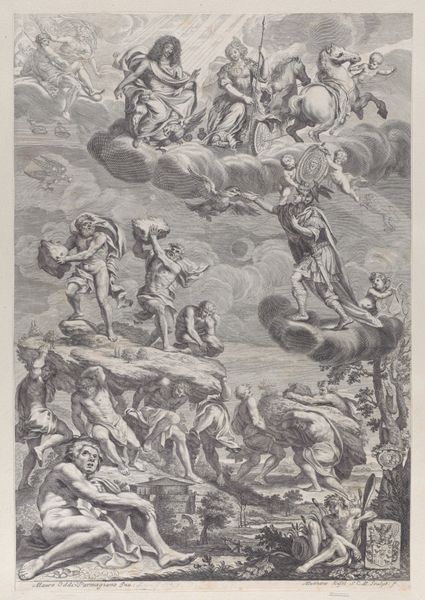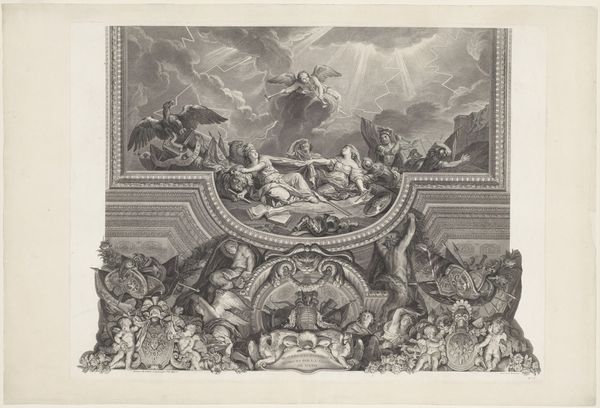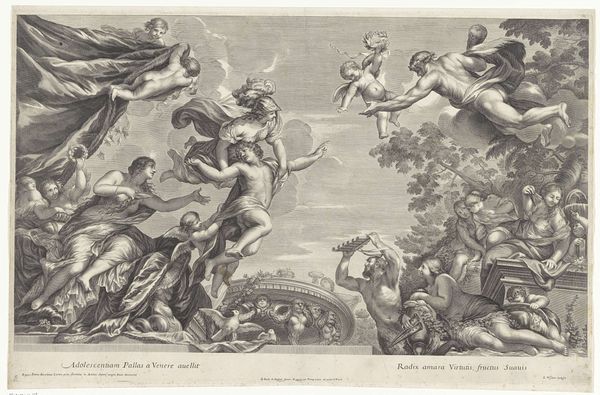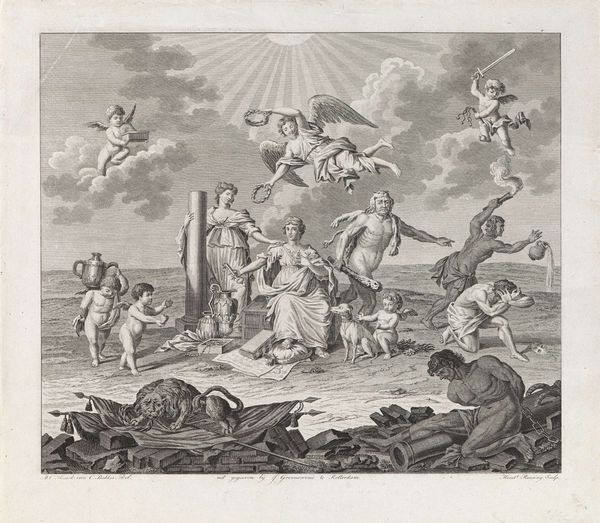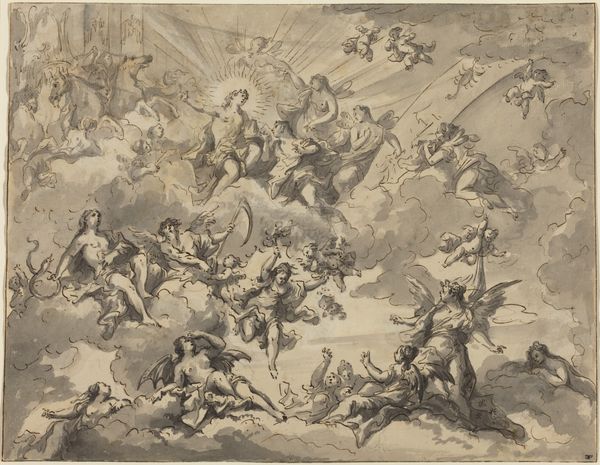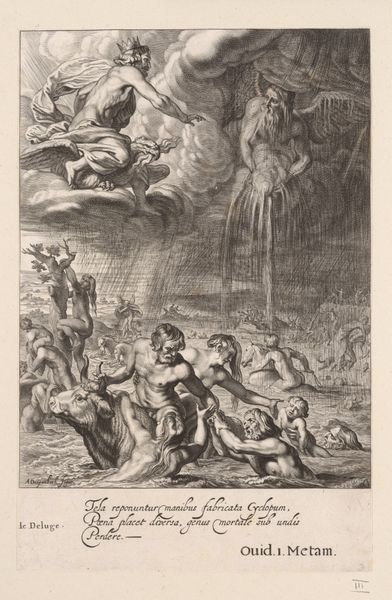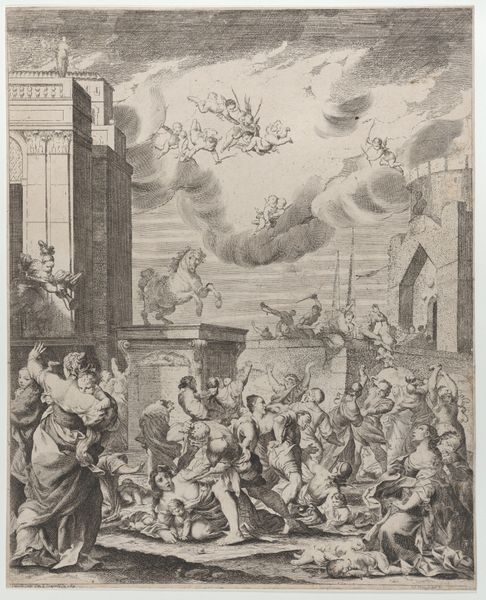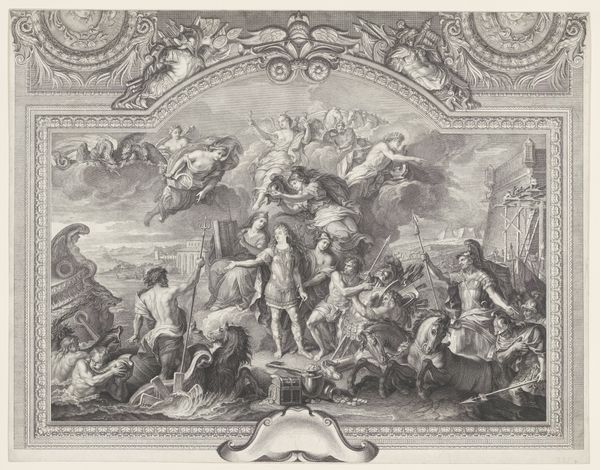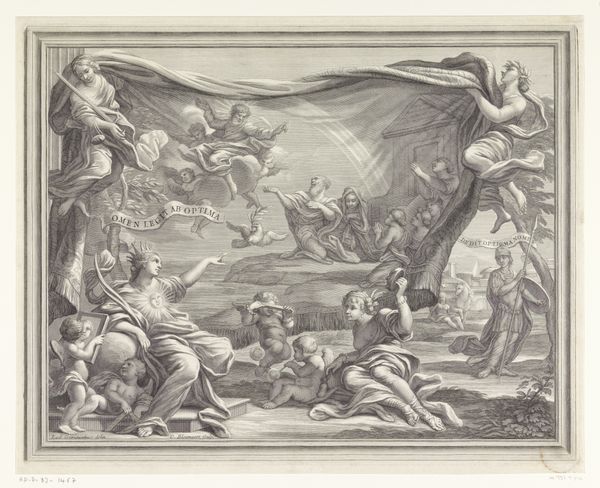
Plafondschildering met klassiek pantheon van goden en helden 1679 - 1728
0:00
0:00
engraving
#
allegory
#
baroque
#
old engraving style
#
classical-realism
#
figuration
#
line
#
history-painting
#
engraving
Dimensions: height 558 mm, width 820 mm
Copyright: Rijks Museum: Open Domain
Editor: Here we have Jean-Baptiste de Poilly’s engraving, "Plafondschildering met klassiek pantheon van goden en helden," dating from between 1679 and 1728. It's teeming with figures floating amongst the clouds! I find the sheer number of figures quite overwhelming. What do you see in this piece, from an art historical and societal viewpoint? Curator: This print is so evocative of its time. Think about the era in which it was created. Royal power, religious authority and this need to express those things grandly. How do you think the printing press made this imagery more available to a larger audience, to the emerging merchant class for example, as opposed to being accessible only to those who had access to painted palace ceilings? Editor: I suppose making it widely available, and in a portable form, changed the function of the image? Was it still about power, or more about, like, aspiring to power? Curator: Precisely! The Baroque style, with its dynamism and emotional appeal, served to reinforce hierarchies, yes, but it also offered a vicarious experience for those excluded from those circles. Notice the gendered nature of this pantheon and how power is asserted. Think about who this imagery excludes and what other stories were not being told during this period. The bodies are very western, what cultures are left out of the imagery? Editor: It’s interesting to consider it not just as a display of authority, but also as a document reflecting who was considered important—or not—at the time. Curator: Absolutely! This work, like so much of art history, serves as both a mirror reflecting the dominant ideologies and as a challenge to us now, to question those power structures and the narratives they promote. It becomes then almost a call to action. To ask what work are WE doing to ensure more voices are included. Editor: I’ll definitely look at art from this period differently from now on, with more focus on who's in the picture – and who isn’t.
Comments
No comments
Be the first to comment and join the conversation on the ultimate creative platform.
